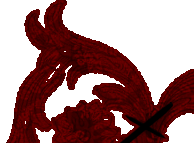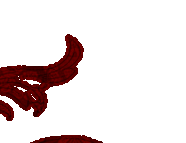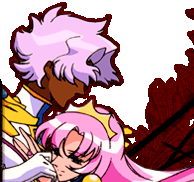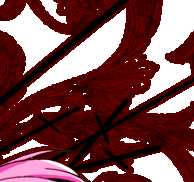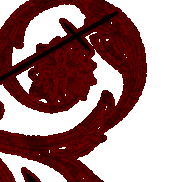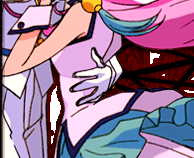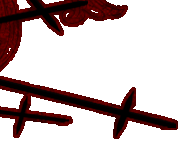
SHŌJO AS A GENRE: EMPOWERMENT OR EXPLOITATION?
This analysis
was donated by Nicole K. Toivonen Winchester.

Magical girl animation, called shōjo and majokko anime in Japan, is a mainstay of television animation that primarily targets female preadolescent viewers. The conventions of the genre, especially the elaborate transformations that enable an ordinary girl to become a supergirl, have been widely imitated across various genres and media categories1 and around the world. Generally, definitions of the magical girl anime tend to focus on the content: mahō shōjo as a genre indicates programs in which a nine- to fourteen-year-old ordinary girl accidentally acquires supernatural power; majokko suggests an alternative setting wherein the female protagonist’s superhuman power derives from her pedigree as a princess of a magical kingdom or similar.2 Shōjo anime is heavily influenced by the conventions of shōjo manga, which was originally constructed for female writers and readers, but controlled by what Kotani Mari terms “decidedly conservative male editors.”3 Kotani suggests, despite hyperfeminized shōjo images that would seem to be created for the male gaze, that the genre is able to explore different narratives and representations while avoiding patriarchal control by virtue of being shōjo – stories ‘for girls.’4 She refers to psychologist Watanabe Tsuneo in suggesting the clear delineations between shōnen [boy’s] and shōjo manga created both sophisticated generic patterns as well as the somewhat paradoxical possibility for transgressing genre/gender: the more conservative and rigid the worlds of shōjo and shōnen are, the more possibility there is for transgression.5 Kotani views this transgressive possibility as a potential space for resistance and empowerment. However, Kumiko Saito does not have the same views of shōjo as a genre. She agrees that “the magical girl genre has been an active site of contesting ideas surrounding gender roles and identities”6 but argues that it is marketing and sales of toy merchandise that defines the genre more strongly than narrative or setting.7 This strategy of exploiting viewer interest specific to a certain gender and age group is the genre’s backbone, and Saito notes the careful utilization of feminine and masculine ideals in children’s television has “established gender as perhaps the most powerful and conspicuous ideological tool that defines and classifies media culture for children.”8 Thus, Saito questions if magical girls are empowered at all:
A more critical analysis is presented in Anne Allison’s discussion of Sailor Moon, in which she defines the battle heroine as “a self-indulgent pursuer of fantasies and dreams through consumption of merchandise” (Allison 2006, 130) … “the process [of a girl hero’s transformation] is more a ‘makeover’ than a ‘power-up’” (138). From a Japanese feminist perspective, Saito Minako (1998, 41) points out that children’s television programs reinforce fixed gender roles functioning in actual society, thereby teaching girls to become a good daughter at home and a good OL [office lady] at work. She argues that the female protagonist in the magical girl genre reconfirms the values of femininity, which teaches girls to envision marriage and domestic life as a desirable goal once they have passed the adolescent stage.9
Saito acknowledges shōjo as a site for contesting concepts of gender and identity, but issues of consumerism, commodification, and ideological indoctrination may make shōjo a less fertile ground for resistance than Kotani and others suggest. Rose Bridges raises similar issues when suggesting alternate areas of inquiry: “…one could study Theodor Adorno and Max Horkheimer’s idea of the “culture industry” in terms of whether anticapitalist and otherwise revolutionary messages are even truly possible in such a consumer-driven market as television anime.”10 Saito and Bridges’ points are salient when examining an anime with revolution as a central theme.
In Saito’s historical view, shōjo anime came in ‘waves’ of popularity. The third wave coincided with the 1990s, emerging “as an art of cross-referencing among multiple genres and gender codes.”11 Saito argues the success of Sailor Moon revived the genre with a magical girl that is far less a genre than a code that binds certain ideological values and advantages attributed to the shōjo identity in contemporary Japan.12 With its diverse influences13 and themes of gender/identity and sexuality, Revolutionary Girl Utena fits into the latter part of this third wave.
A seemingly minor change came to shōjo with this wave that Saito marks as significant: the transformation sequence or metamorphosis. While before the 1990s these sequences involved the literal transformation of the body, usually from girl to adult woman, the magical metamorphoses of the third wave of shōjo are less about aging or physical growth than the visual euphemism of transformation – adding embellishments to costuming or hair, but nothing beyond aesthetic makeover.14 This has already been problematized by Saito’s reference to Allison’s argument that Sailor Moon’s transformation is “more a ‘makeover’ than a ‘power-up,’” but of particular interest is the shift from aging and physical growth to cosmetic change. Saito writes about these sequences:
These technical innovations of transformation go perfectly with the symbolic function of shōjo, that is, the transience that lasts forever [emphasis mine]. This fantasy is secured by repetitions of transformation sequences, a limited animation technique that repeats the act of border crossing between shōjo and her sexual maturity, thereby enabling viewers to envision the simultaneity of sexuality and its absence… the recurrence of the bodily transgression between the past and the future protracts the fantasy of the shōjo, whose sexual maturation has already happened and will never happen.”15
In past waves of shōjo, ‘growing up’ through magical transformation signified some form of social or sexual empowerment but in the 1990s, magical girls may no longer need to grow-up magically to claim power: they are already powerful as they are.16 However this power is a paradox, given the recent shōjo heroine’s eternal cuteness associated with youth, passivity, femininity, and powerlessness – Saito argues these cute battle heroes claim power in powerlessness.17 While she acknowledges that Japanese cute values can be “a passive, temporal, and disguised leeway to play resistance to male-dominant adult society,” Saito notes that these passive forms of resistance depend on simultaneously maintaining existing power structures.18 She continues: “In a similar way, the magical girl’s power can be considered as power only so far as her entry into the adult world of “real” power is precluded.”19 In this sense, a magical girl can only ‘grow up’ by giving up her magic, if magical girls grow up at all.
Go back to Index - Next Page
1 Kumiko Saito, ‘Magic, “Shōjo”, and Metamorphosis: Magical Girl Anime and the Challenges of Changing Gender Identities in Japanese Society’, The Journal of Asian Studies, 73.1 (2014), 143–64 (p. 144).
2Saito, p. 145.
3Mari Kotani, ‘Metamorphosis of the Japanese Girl: The Girl, the Hyper-Girl, and the Battling Beauty’, Mechademia, 1 (2006), 162–69 (p. 167). 4 Kotani, p. 167.
5 Kotani, p. 167.
6 Saito, p. 145.
7 Saito, p. 144.
8 Saito, p. 144.
9 Saito, pp. 145–46.
10 Rose Bridges, ‘“The Sound That Races Through the End of the World”: Musical Moments as Refrain and Revolution in the Anime of Ikuhara Kunihiko’, Mechademia, 13.2 (2021), 9–25 (p. 24). 11 Saito, p. 156.
12 Saito, p. 157.
13 Bridges, p. 9.
14 Saito, p. 157.
15 Saito, pp. 155–56.
16Saito, p. 157.
17 Saito, p. 158.
18 Saito, p. 161.
19 Saito, p. 161.
 |

